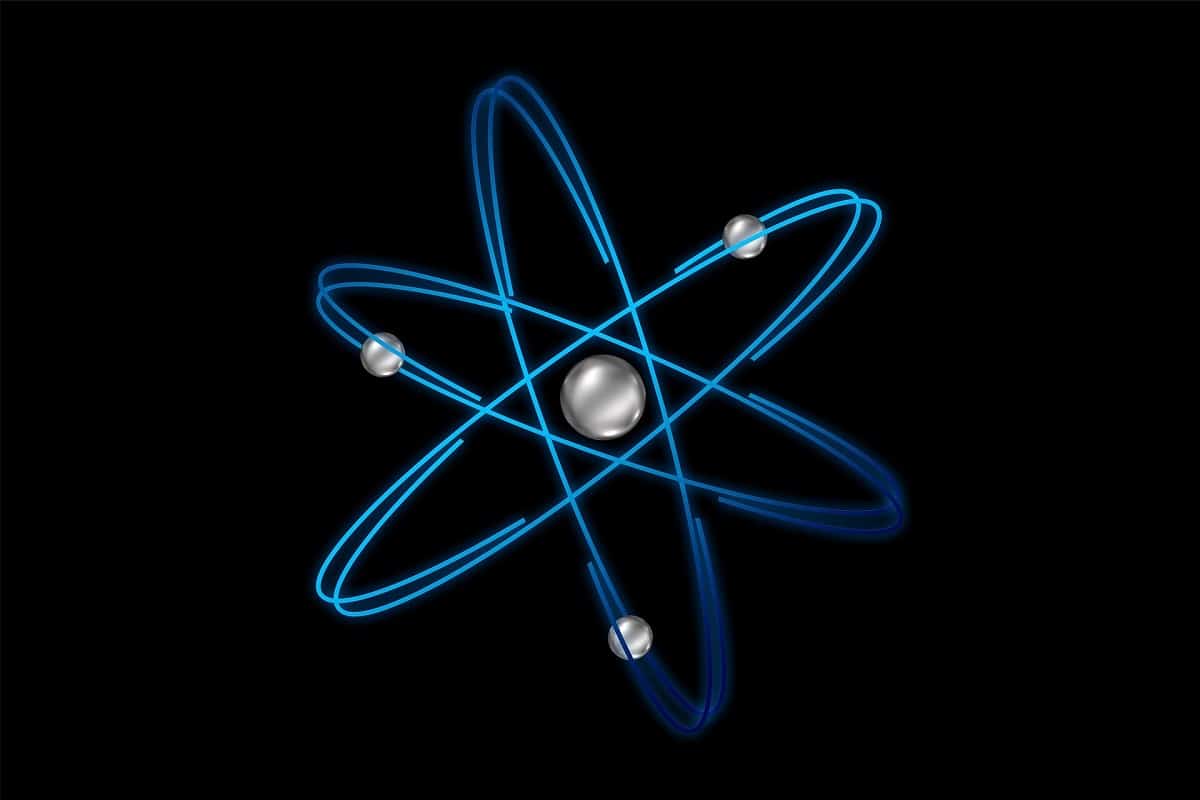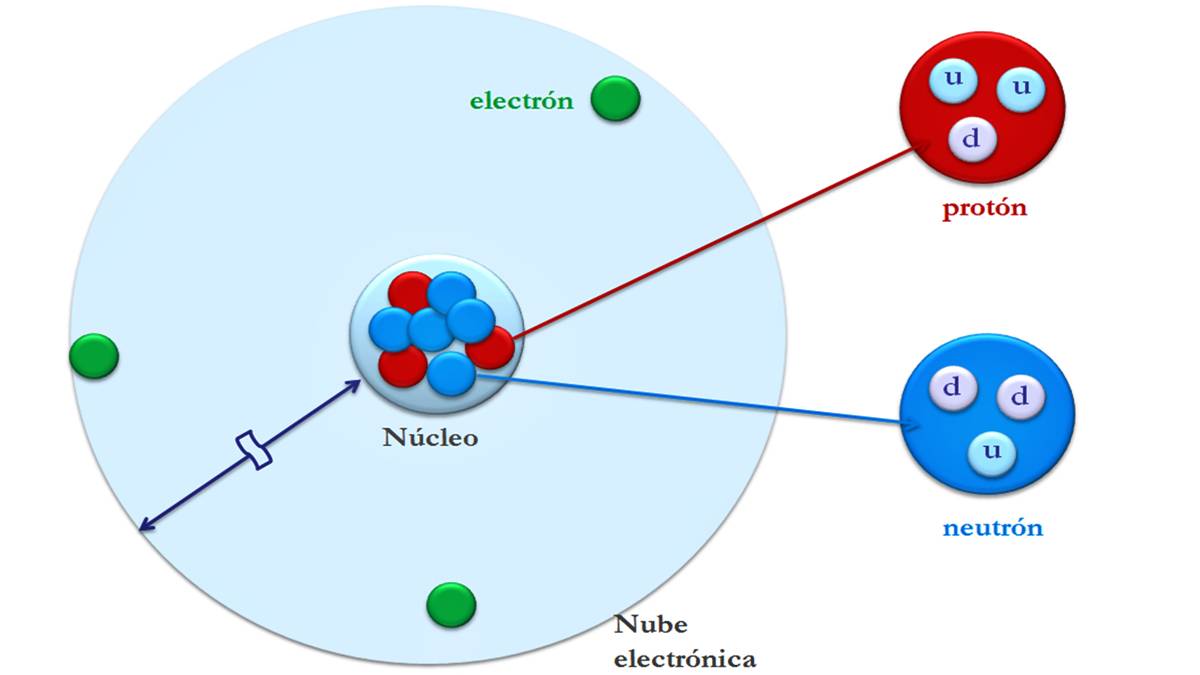
The atom is the basic unit of matter and is the smallest fraction that can identify a chemical element. It consists of an atomic nucleus that contains neutrons and protons, and electrons surrounding the nucleus. The term atom is derived from the Greek and means indivisible. However, many people do not know well What is an atom nor what are its characteristics.
Therefore, we are going to dedicate this article to tell you what an atom is, its characteristics and importance.
What is an atom

Atoms consist of a central part called the nucleus, in which protons (positively charged particles) and neutrons (electrically neutral particles) reside. The region around the nucleus is occupied by electrons (negatively charged particles); this region is called the electrical layer. The electrical shell (negatively charged) and the core (positively charged) are held together by electrical attraction.
The average diameter of an atom is about 10-10 meters, and the average diameter of a nucleus is about 10-15 meters; so, an atom has a diameter of 10.000 to 100.000 times greater than its nucleus. For example, if an atom is the size of a football field, the nucleus will be the same size as the ball in the center of the field. If an atom is 100 meters in diameter, its nucleus is 1 centimeter in diameter.
Some history

The Greek philosopher Aristotle (384 BC – 322 BC) tried to explain the composition of all matter from the elements: earth, air, fire and water. Democritus (546 BC – 460 BC) was a Greek scientist and mathematician who proposed the idea that there was a limit to the size of particles. These particles become so small that they can no longer be divided, he said. He called such particles "atoms."
For most of the XNUMXth century, it was the atomic model of the British scientist Dalton who proposed the atomic theory, which was far beyond the thinking of the ancients at the time.
This theory says that All matter is made up of tiny indivisible particles called atoms. Recent research has found that atoms are made up of other small particles called subatomic particles.
Historically, different atomic theories on the composition of matter have been developed before current knowledge on atomic structure was obtained. Based on the atomic theory, Scientists have been demonstrating gradually evolving models of atoms.
The first model proposed by John Dalton developed into Niels Bohr's model of the atom. Bohr proposed a model very similar to the current model of electrons orbiting the nucleus.
structure of an atom

Atoms are made up of tiny particles called subatomic particles: electrons, protons, and neutrons. Most of the mass of an atom is concentrated in the nucleus. And its largest volume is in the electrical shell where the electrons are found.
Electrons, protons and neutrons
Electrons are negatively charged and have almost no mass. Its mass is about 1840 times that of the atomic nucleus.. They are tiny particles that revolve around the central nucleus of an atom. In addition, they move rapidly around the nucleus generating an electromagnetic field.
A proton has the same positive charge as the charge on an electron in absolute value, so protons and electrons tend to attract each other. These constitute the unit of mass and together with the neutrons form the nucleus of the atom.
Neutrons have no charge, that is, they have a neutral charge. Along with the protons, it forms the nucleus and represents almost all the mass (99,9%) of the atom. Neutrons provide stability to the nucleus.
Atoms have energy levels, seven shells around the nucleus in which there are electrons orbiting the nucleus. The shells are named K, L, M, N, O, P, and Q. Each shell can hold a finite number of electrons: eight electrons per shell. The outermost layer is always the most dynamic. Only the hydrogen atom does not have neutrons and only one electron orbits around the proton.
chemical characteristics
In chemistry, atoms are the fundamental units that usually retain their original properties in every reaction. They are not destroyed or created, they are simply arranged in different ways with different connections between them.
Atoms clump together to create molecules and other kinds of materials. The bonds created in chemical reactions have a certain composition that distinguishes the different chemical elements. These elements are those that appear on the periodic table of elements.
Each of these elements has many protons in the nucleus. This number is called the atomic number and is denoted by the letter Z. All atoms with the same number of protons belong to the same element and have the same chemical properties even though they are different chemical elements.
On the other hand, we find the mass number, denoted by the letter A. This number refers to the number of nucleons present in the atom. Another type of atom that we can find, and about which we know best, is an isotope. These atoms have the same number of protons but different numbers of neutrons. They have the same chemical properties although their physical properties are different from each other.
As we noted earlier, isotopes are very important. And they're vital to nuclear power because uranium enrichment involves converting one uranium isotope into another with a more unstable chemical structure, allowing us to have a chain reaction.
Properties
The properties that define an atom are:
- Atomic number (Z) indicating the number of protons in the nucleus. All atoms with the same number of protons belong to the same element. For example, a hydrogen atom with only one proton.
- The mass number refers to the sum of protons and neutrons.. Elements with different numbers of neutrons are different isotopes of the same element.
- electronegativity It is the tendency of atoms to attract electrons when they form chemical bonds.
- atomic radius It corresponds to half the distance between two joined nuclei of the same element.
- ionization potential It is the energy required to remove an electron from an element.
I hope that with this information you can learn more about what an atom is and its characteristics.
VERY GOOD
RICARDO